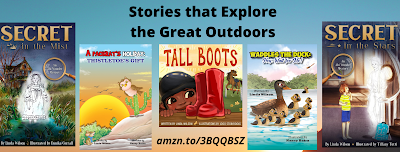What George Orwell Has To Say About It
By Carolyn Howard-Johnson
You may know me as “The Frugal Book Promoter”…or novelist. . .or poet. But because this year is shaping up to be an especially difficult year worldwide, maybe you won’t mind if I stray a bit from my usual topics to talk to you about topics that that have been in the news recently—namely freedom of the press and the importance of words?
Not long in the past during the height of the Covid pandemic, the White House issued a list of words the Center for Disease Control and Prevention shouldn’t use. That was unprecedented. It bothered me then and it bothers me even more now that Covid keeps reoccurring but some of the other major problems we face have exacerbated. We are lucky that as writers it has been relatively easy to isolate ourselves. That has made me even more appreciative of the importance of words in my life and, I hope, has done the same for you..
The LA Times (Tuesday, Jan 16, 2020 page B2) used this as a lead for the story on this repression of words, all the more surprising because the United States is known for its respect for words, both spoken and written:
“’It’s a beautiful thing, the destruction of words.’ George Orwell writes
in the fifth chapter of his dystopian novel, 1985.”
I love the novel the Times chose to quote, but I have always been too optimistic to give its dystopian theme much credence. But here we are with four public health experts from Emory University in Atlanta saying that if the CDC actually obeys the White House order to avoid certain words and phrases and that by doing so, it “squanders [the agency’s] limited resources.” Other agencies were also “forbidden” to use words like “vulnerable,” “entitlement,” “diversity,” “transgender,” “fetus,” “evidence-based” and “science based.” In some cases, the administration’s budget office suggested alternative terms which is a subtle way of saying they are not only telling them what words to avoid, but telling us what words they would like to them to use. I can only hope that this administration will return to honor the constitution’s freedom of speech and press intentions.
Then in a recent Sierra Club magazine (sources do count for us writers!), I learn that the US climate office was told not to use the terms “climate change,” “emissions reduction,” or “Paris agreement.” Seems someone was trying to control what we write about, maybe trying to control how we think.
Times also reported that in addition to our concepts of free speech and free press, gagging like this violates The Plain Writing Act of 2010 that requires all federal agencies “improve the effectiveness and accountability to the public by promoting clear Government communication that the public can understand and use.”
We writers should be thankful for that “plain writing” encouragement! But as writers, we should all be worried—even on the lookout—for anything that limits our use of words.
As an example, we’ve been encouraged to use only Merry Christmas as a holiday greeting for decades. I’d hate to lose alternative greetings. As a courtesy, I’ve always reserved Merry Christmas for people I know to be Christian, Happy Hanukkah for those I know to be Jewish. Have a great Kwanza for the black people I know celebrate it but not those for whom I am unsure. Ramadan? Well, I’ve never had occasion to use it (sorry!), but if I did I would be equally careful to abide by the traditions of the person involved.
There are others, but generally, “Happy holidays,” is a polite way to be inclusive when we don’t know the situations or do know that in a diverse population I may be addressing a few people who are members of each group with a few atheists to boot. That is a very small example of how important words are, and how important it is we have access to all the ones we find in a dictionary (and some we don’t). For clarity. So that we can. . . ahem, obey the Plain Writing Act. Now there’s a government proclamation I can get my teeth, molars, and incisors into!
Before I assure that I don’t get too blasé, I occasionally revisit the date that it was written. 2010! Perhaps we need a reminder of the importance of clarity in our communication more often than we think we should. Is it time again? And can we write clearly if words—precious words that came about presumably because they served a purpose—are denied us? And do we pay no attention when other entities use words to color the way we think. That will always be with us. It is part of the price we pay for free speech issues. We can refuse to be taken in by it. Always on the lookout.
----





.png)













